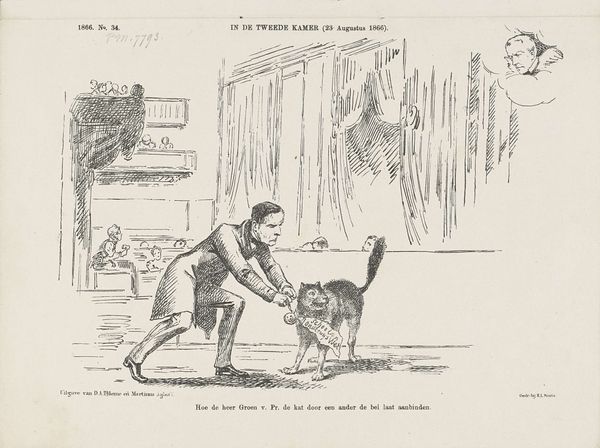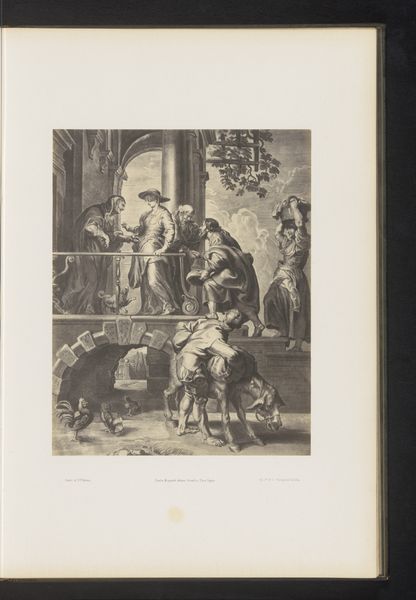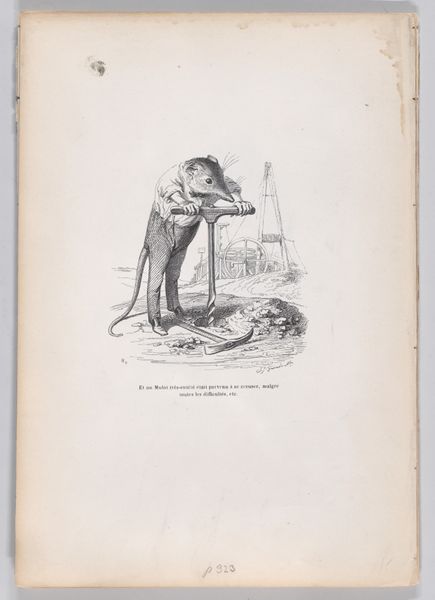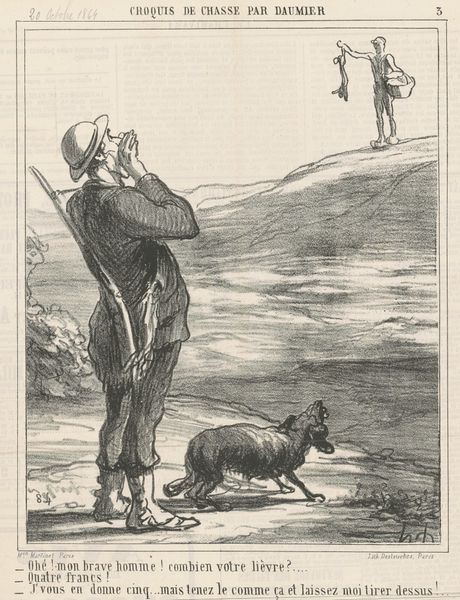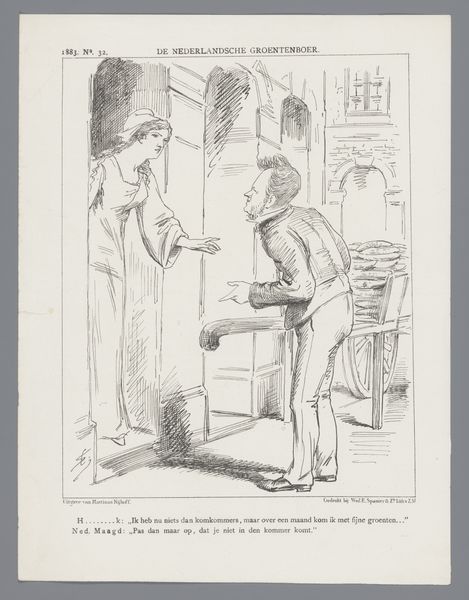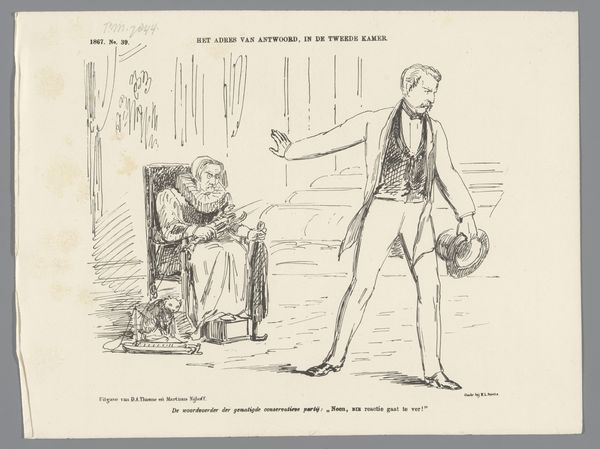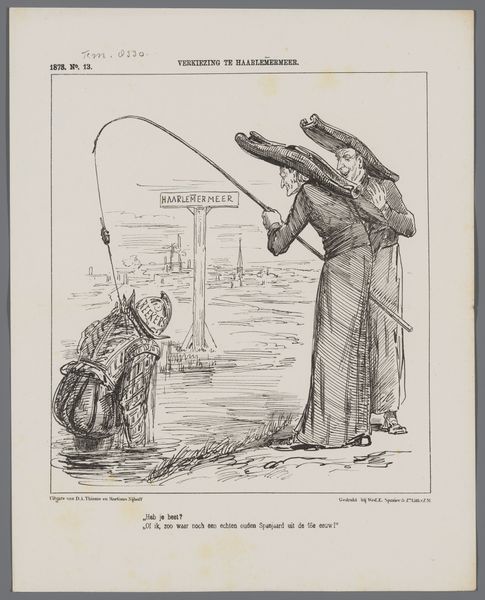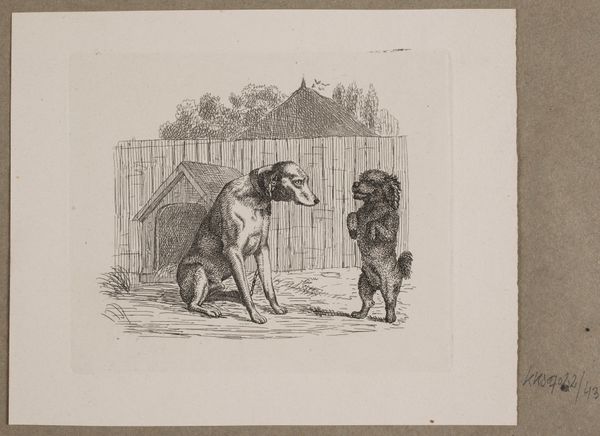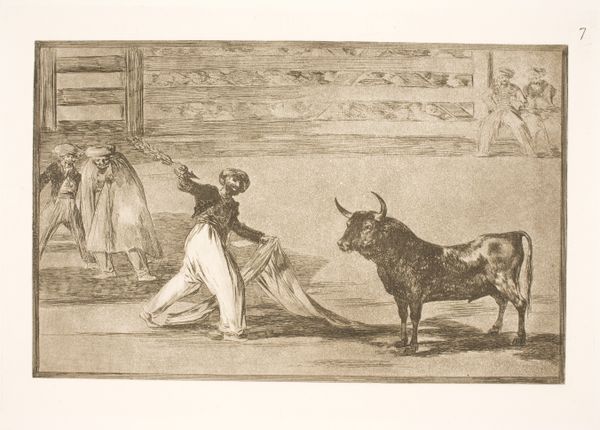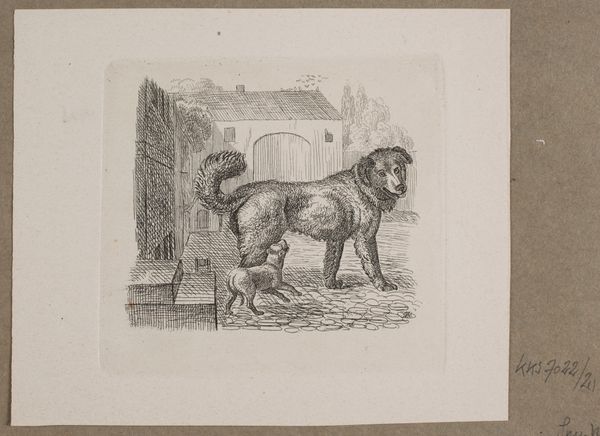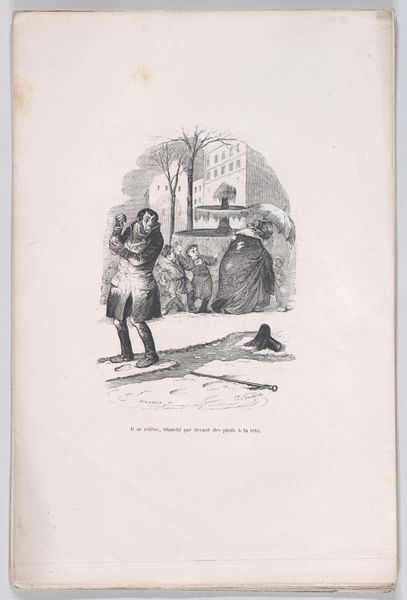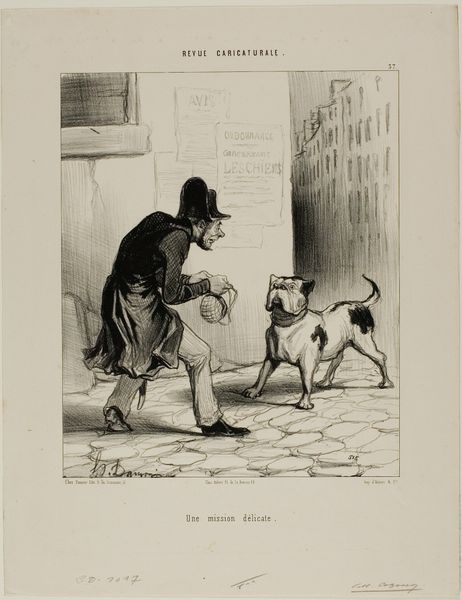
drawing, pen
#
drawing
#
comic strip sketch
#
imaginative character sketch
#
quirky sketch
#
caricature
#
sketch book
#
personal sketchbook
#
idea generation sketch
#
sketchwork
#
sketchbook drawing
#
pen
#
storyboard and sketchbook work
#
sketchbook art
Dimensions: height 215 mm, width 275 mm
Copyright: Rijks Museum: Open Domain
Editor: This is a political cartoon titled "Spotprent op het amendement van Heemskerk, 1869," made in 1869 by Johan Michaël Schmidt Crans using pen and ink. The mood is satirical, even a bit cynical. A man is offering what appears to be a treat to a dog, but there's something unsettling about the gesture. How do you interpret this work? Curator: I see a loaded image, one speaking to political compromise and perhaps the corruption thereof. Consider the dog: it’s a common symbol of loyalty, of guarding something precious. Here, it’s being offered a bribe – a small cake or bread perhaps? Note the man's stance – almost furtive – and the keys hanging from his belt. Keys symbolize power and access, perhaps even control over the very 'kiesstafel' the title refers to – the election table. Editor: So, the 'amendment of Heemskerk' might be the treat being offered to sway the dog’s, or rather, the voters’, loyalty? Curator: Precisely. Schmidt Crans is drawing on well-worn cultural symbols to express a contemporary political viewpoint. Think of how dogs are treated today: our relationships with pets and the symbols stay the same, evoking fidelity. Consider also the Dutch Golden Age paintings, dogs often feature with overt moral connotations, symbolizing faithfulness or, conversely, base desires. The cartoon borrows from this established visual vocabulary, instantly imbuing the scene with meaning for its 19th-century audience. Does that reading resonate? Editor: Definitely. It highlights how visual language can persist across centuries and be re-applied. The immediate gut reaction I had to the piece, as a kind of unsettling cynical scene, still stands. I see that’s rooted in really old ideas. Thank you for revealing what that visual shorthand is really communicating. Curator: My pleasure. Reflecting on familiar cultural symbols often unveils fascinating layers of historical and social understanding embedded within an artwork.
Comments
No comments
Be the first to comment and join the conversation on the ultimate creative platform.
